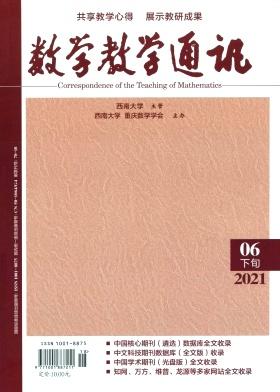Making sense of senseless things: an enactivist analysis of harmony and dissonance in problem solving
引用次数: 0
Abstract
Operating from an enactivist theory of cognition, this work seeks to understand the emergent nature of mathematical activity mediated by manipulatives. Enactivism takes a biological approach and theorizes that perception consists in perceptually guided action enabled by cognitive structures that emerge from recurrent sensorimotor patterns (Proulx, 2013; Varela, Rosch, & Thompson, 1992). These processes are non-linear, unfolding, and ongoing events where meanings emerge and transform in interactions, not inside of minds and bodies (Malafouris, 2013; Proulx, 2019). Further, one’s way of knowing is driven by an evolutionary imperative to act in an adequate, fitting, and harmonious way with one’s environment (Maheux & Proulx, 2015). This search for harmony leads to a structural coupling between the individual and their environment with the individual’s history of recursive interactions playing a crucial role in structurally determining this course of evolution (Proulx, 2013). This work seeks to elucidate the nature of emergent mathematical activity mediated by manipulatives by addressing the question, “What role might manipulatives play in the emergent processes of sense making?” To do so, we analyzed the activity of “Dolly” and “Lyle” as they aimed to make sense of the flip-and-multiply algorithm for fraction division in a problem-solving interview using a manipulative Dolly created for engagement with fraction concepts. The data comes from a larger study that is exploring how an open-ended and iterative design experience centered in Making (Halverson & Sheridan, 2014) might inform prospective mathematics teachers’ (PMTs’) pedagogy. We took a revelatory case study approach to analyze and transcribe the video data (Yin, 2014), and focused our analysis on the particular interactions aiming to coordinate meanings of fraction division in the manipulative and in the algorithm that presumably substantiates those meanings (Malafouris, 2013). Our analysis illuminates the role manipulatives can play in establishing a notion of sense making that is grounded in embodied understandings. For example, although Dolly and Lyle arrived at the correct answer with the manipulative early in their problem solving, they were dissatisfied because it did not seem to fit with the answer they derived from the algorithm. Eventually, this dissonance gave way as they established harmony between the two, thereby revealing the compelling power that embodied tool use can have for altering a space of possible actions and consequently on sense-making activity. Our analysis also reveals what might be problematic about a pedagogical practice where a procedure is adequate and sense making is not the criteria for fit. The enactment of the algorithm was disrupted through use of a tool, ultimately leading to an authentic understanding of what it means to do fraction division. These findings further substantiate extant arguments for engaging mathematics learners in embodied, tool-mediated problem-solving activity in conjunction with the learning of procedures.理解无意义的事情:解决问题时和谐与不和谐的积极分析
从积极的认知理论出发,这项工作试图理解由操纵者介导的数学活动的涌现性。激发行动主义采用生物学方法,并从理论上认为,感知包括由反复出现的感觉运动模式产生的认知结构所支持的感知引导行动(Proulx, 2013;Varela, Rosch, & Thompson, 1992)。这些过程是非线性的、展开的和持续的事件,其中意义在相互作用中产生和转化,而不是在思想和身体内部(Malafouris, 2013;•,2019)。此外,一个人的认知方式是由一种进化的要求所驱动的,即以一种适当的、合适的、和谐的方式与自己的环境相适应(Maheux & Proulx, 2015)。这种对和谐的追求导致了个体与环境之间的结构耦合,而个体的递归互动历史在结构上决定了这一进化过程中起着至关重要的作用(Proulx, 2013)。这项工作试图通过解决这个问题来阐明由操纵者介导的紧急数学活动的本质,“操纵者在紧急的意义形成过程中可能扮演什么角色?”为此,我们分析了“多莉”和“莱尔”的活动,因为他们的目的是在解决问题的面试中使用为参与分数概念而创建的操纵性多莉来理解分数划分的翻转和乘法算法。这些数据来自一项更大的研究,该研究正在探索以制作为中心的开放式和迭代设计体验(Halverson & Sheridan, 2014)如何为未来的数学教师(pmt)的教学法提供信息。我们采用了一种启发性的案例研究方法来分析和转录视频数据(Yin, 2014),并将我们的分析重点放在旨在协调操作和可能证实这些含义的算法中分数分割的含义的特定交互上(Malafouris, 2013)。我们的分析阐明了操纵者在建立以具身理解为基础的意义建构概念方面所起的作用。例如,虽然多莉和莱尔在解决问题的早期就通过操纵得到了正确的答案,但他们并不满意,因为这似乎与他们从算法中得到的答案不相符。最终,当他们在两者之间建立和谐时,这种不和谐让位,从而揭示了具体化工具使用可以改变可能行动空间的令人信服的力量,从而改变了意义构建活动。我们的分析还揭示了教学实践中可能存在的问题,其中程序是充分的,而意义构建不是合适的标准。通过使用一种工具,算法的制定被打乱了,最终导致了对分数除法的真正理解。这些发现进一步证实了现有的观点,即让数学学习者参与具体化的、工具介导的问题解决活动,并与程序学习相结合。
本文章由计算机程序翻译,如有差异,请以英文原文为准。
求助全文
约1分钟内获得全文
求助全文

 求助内容:
求助内容: 应助结果提醒方式:
应助结果提醒方式:


